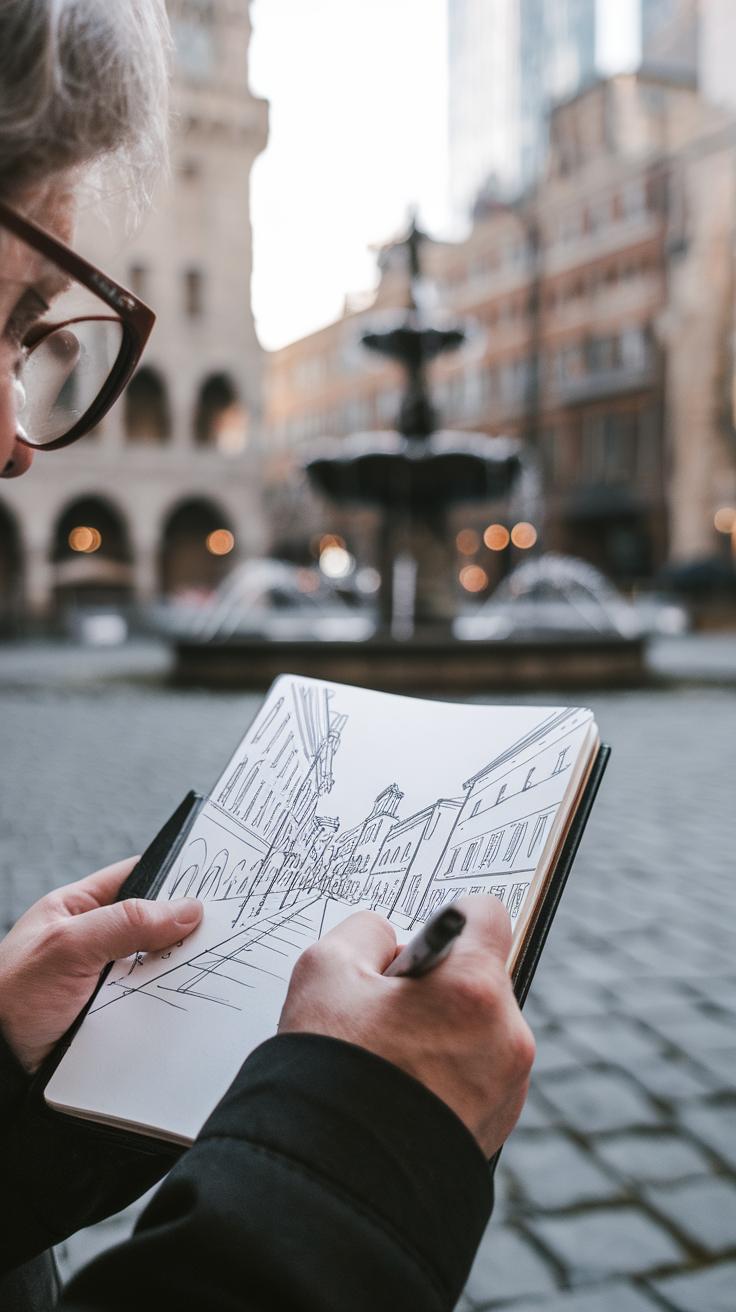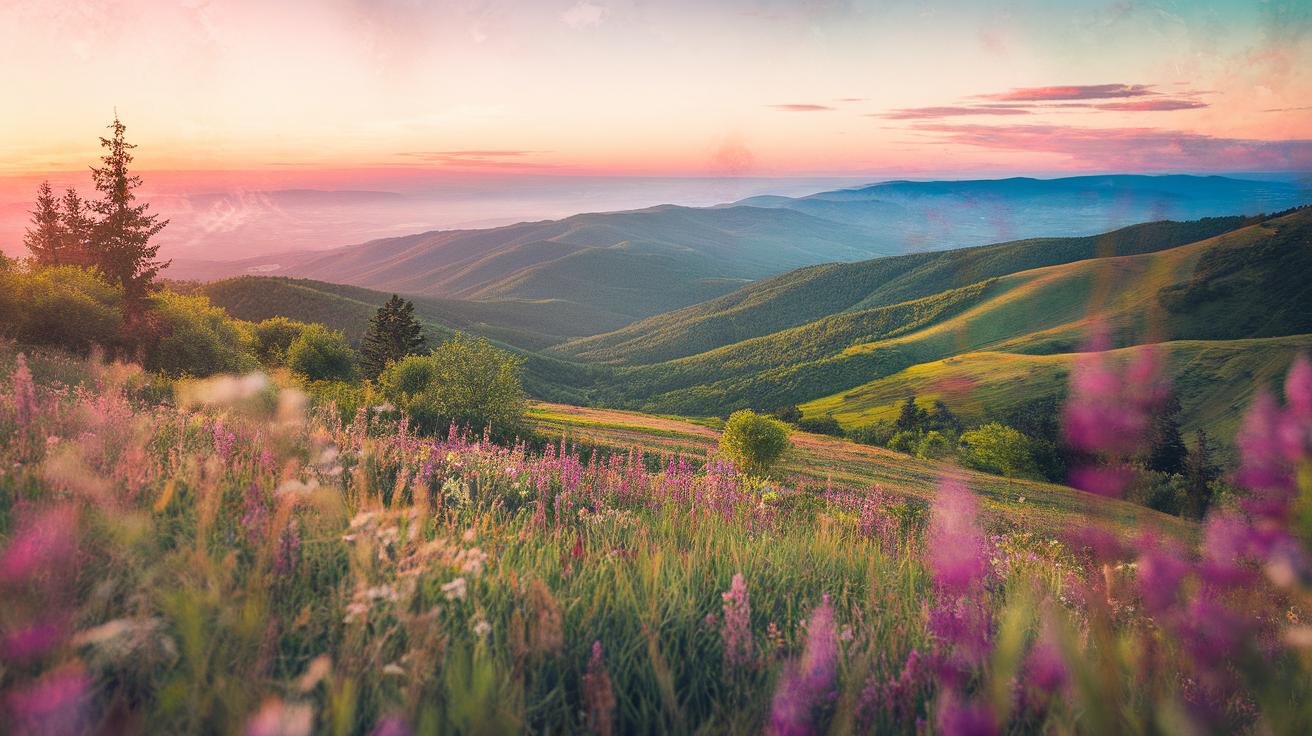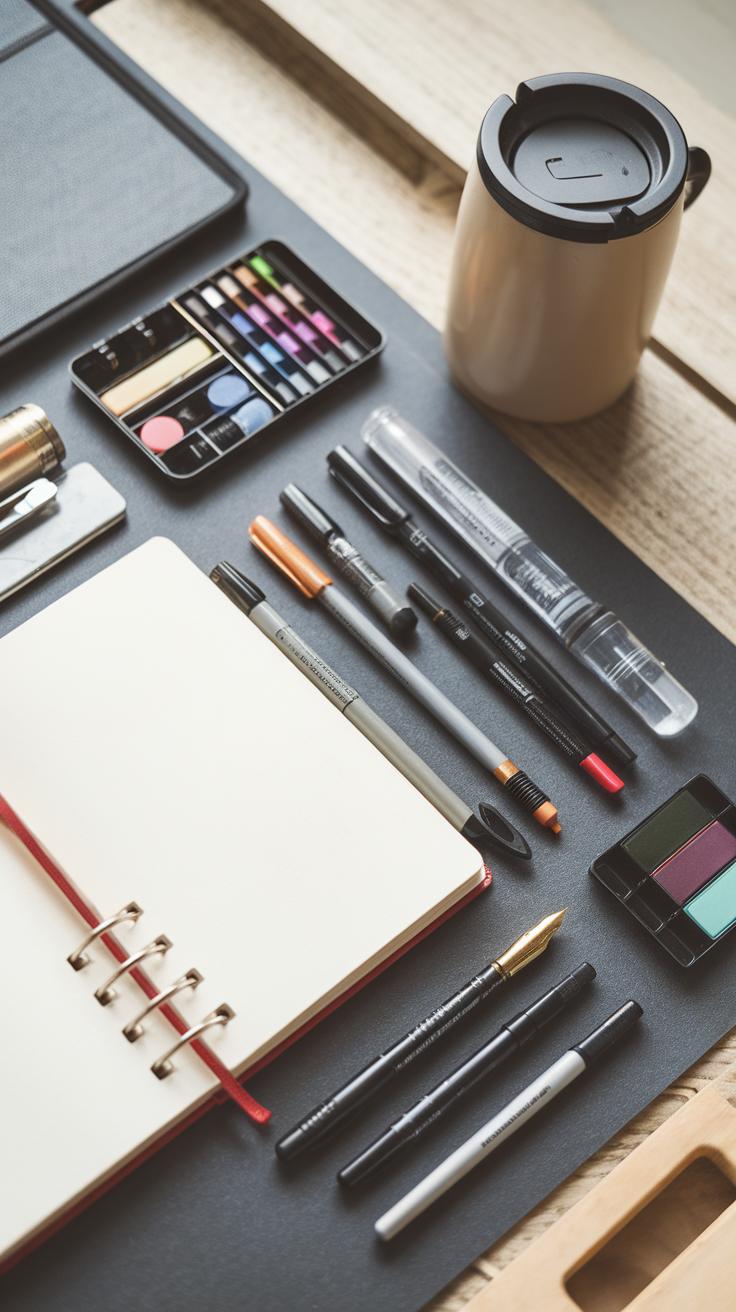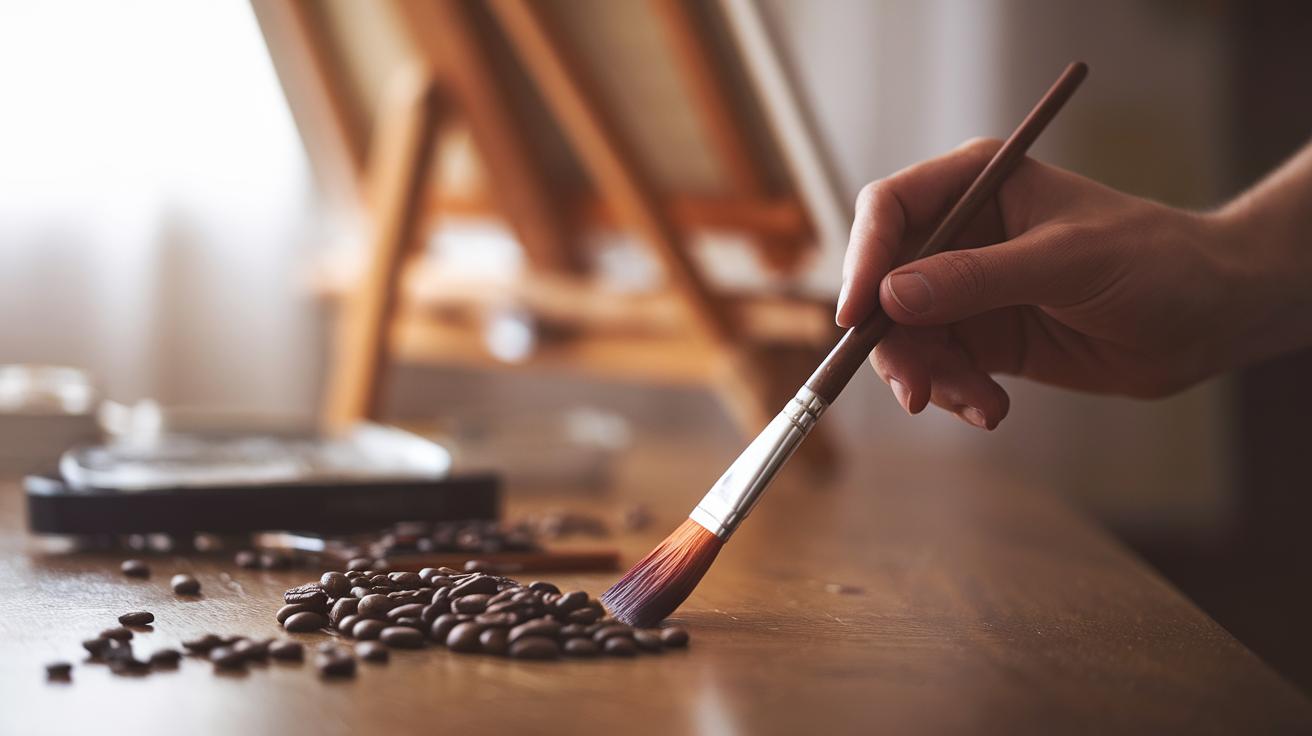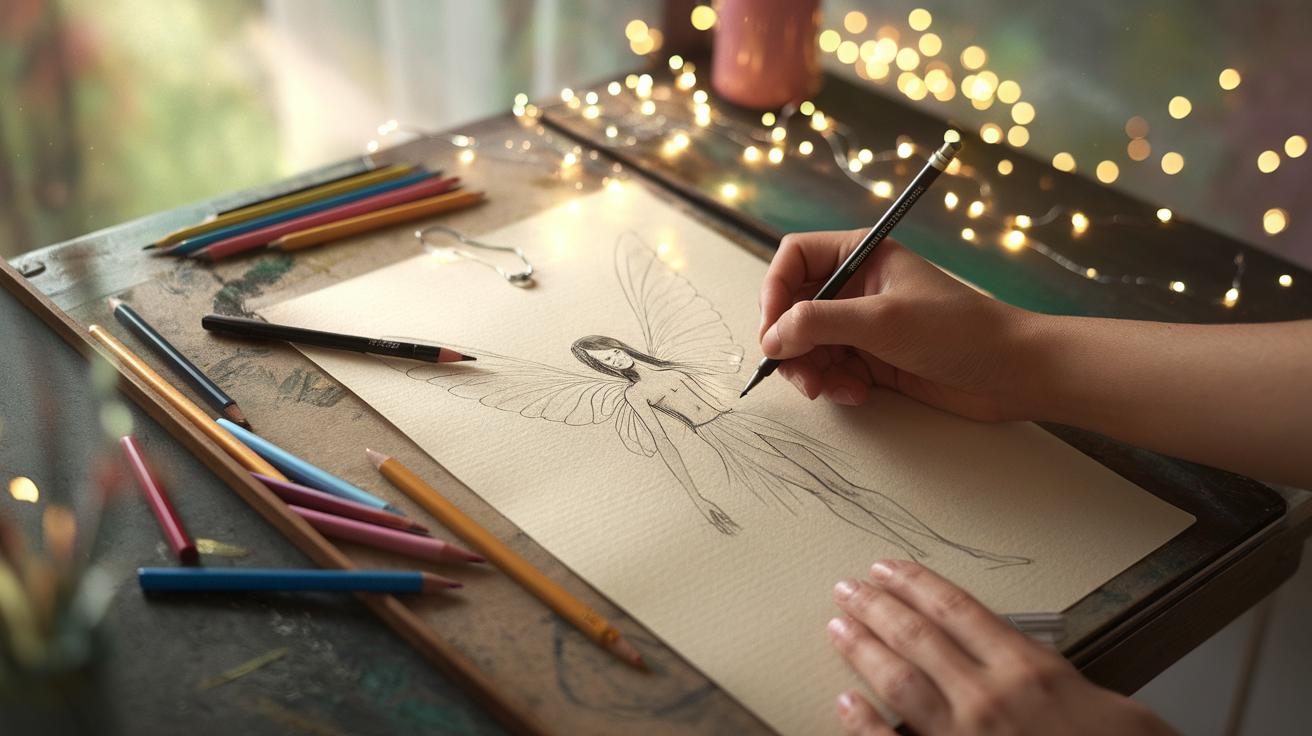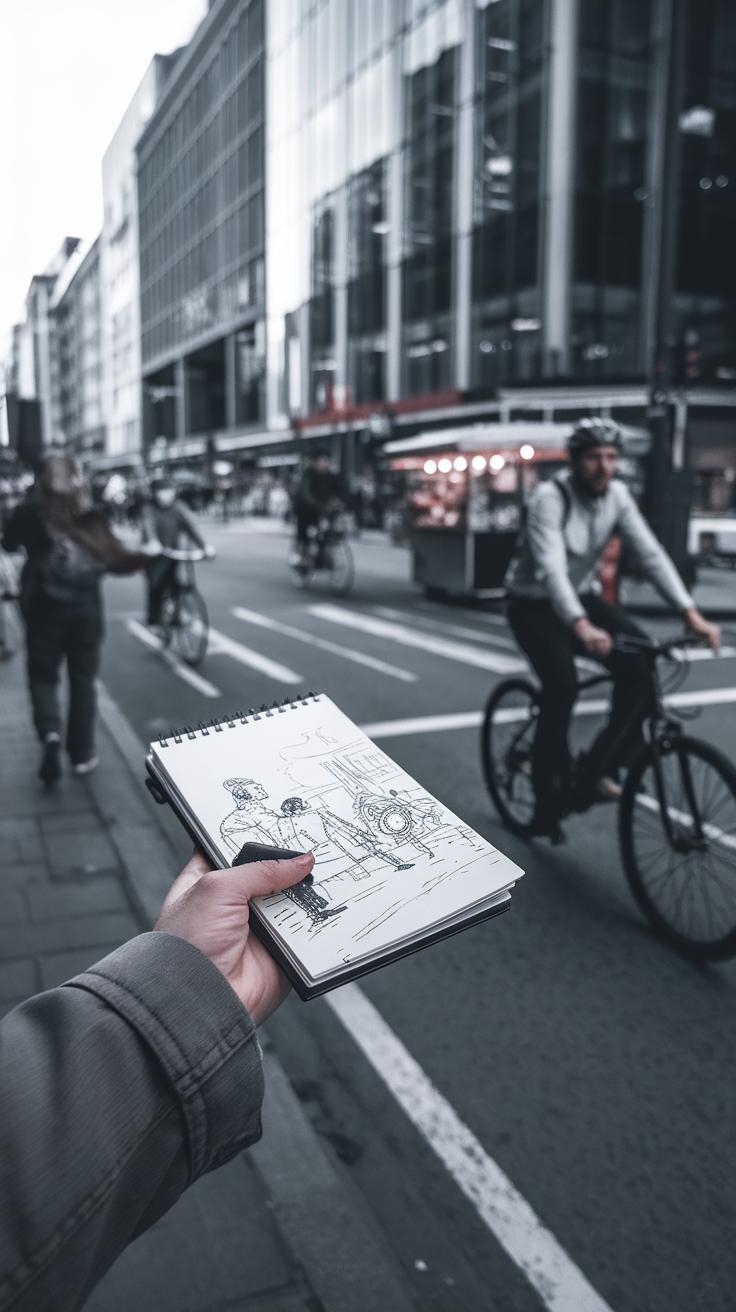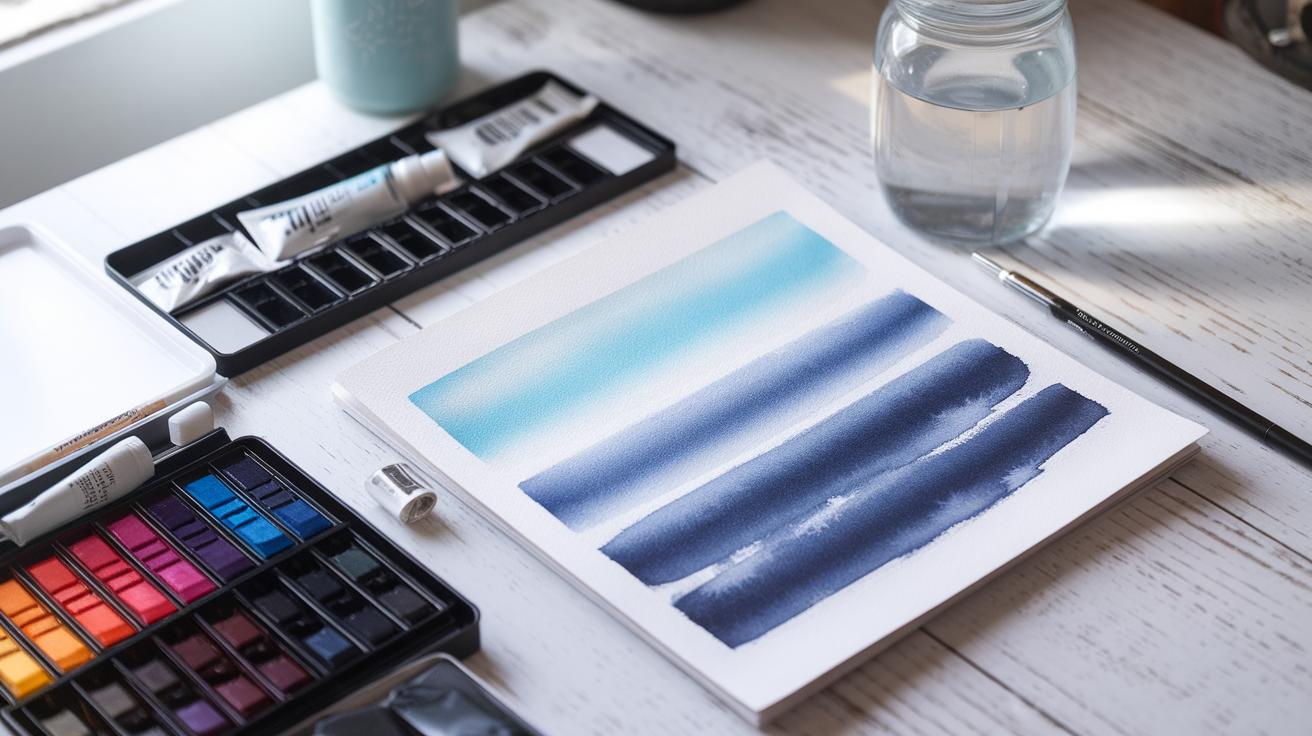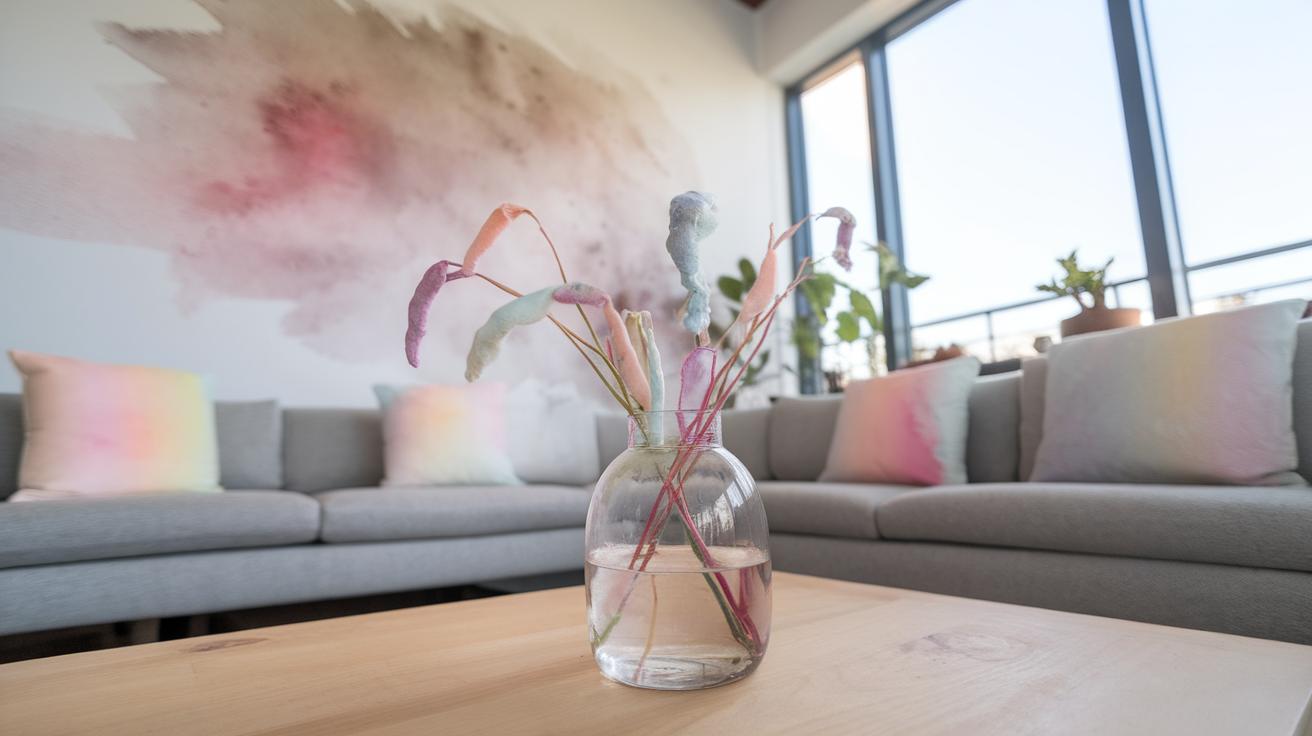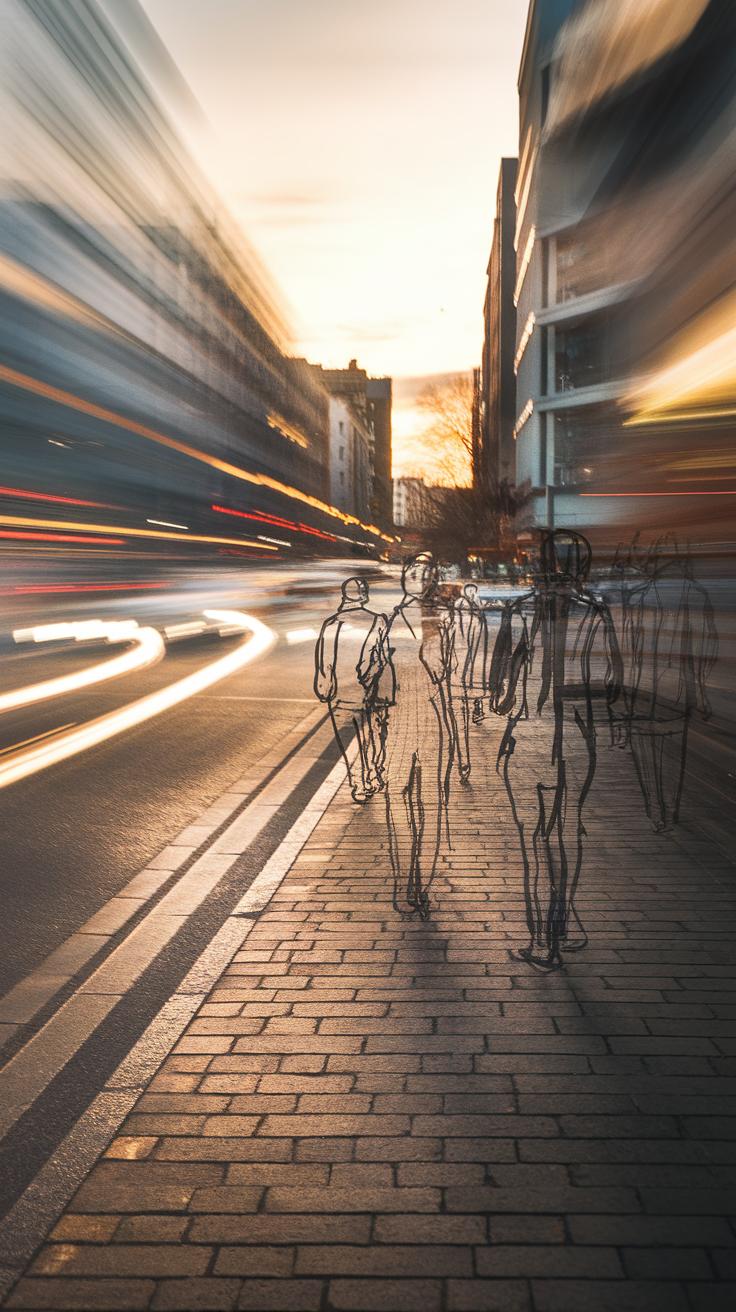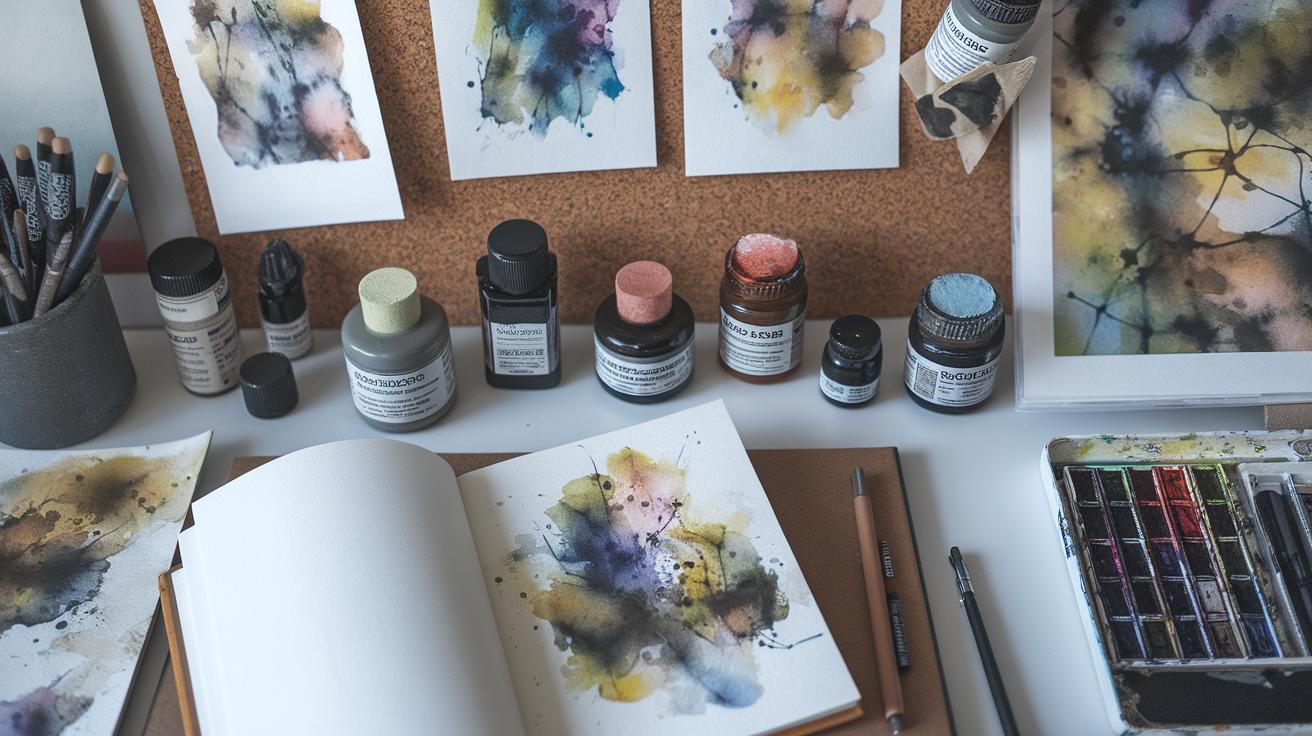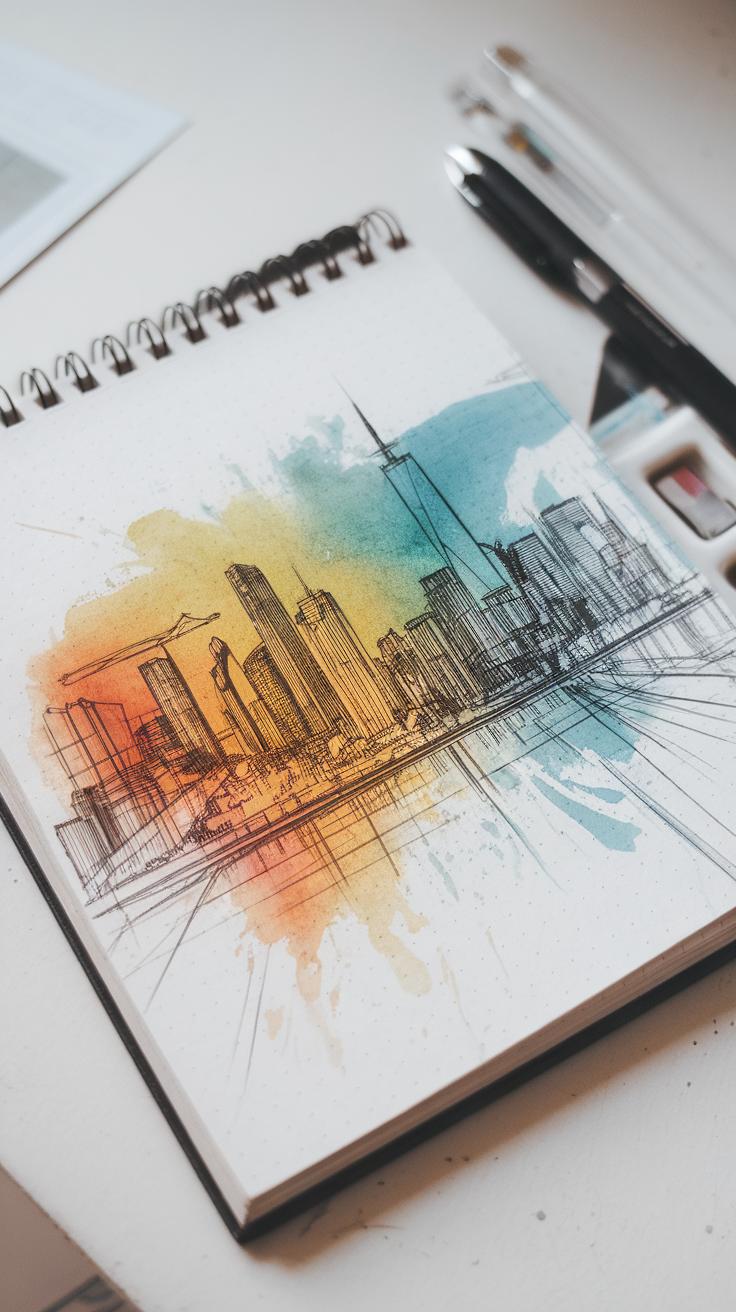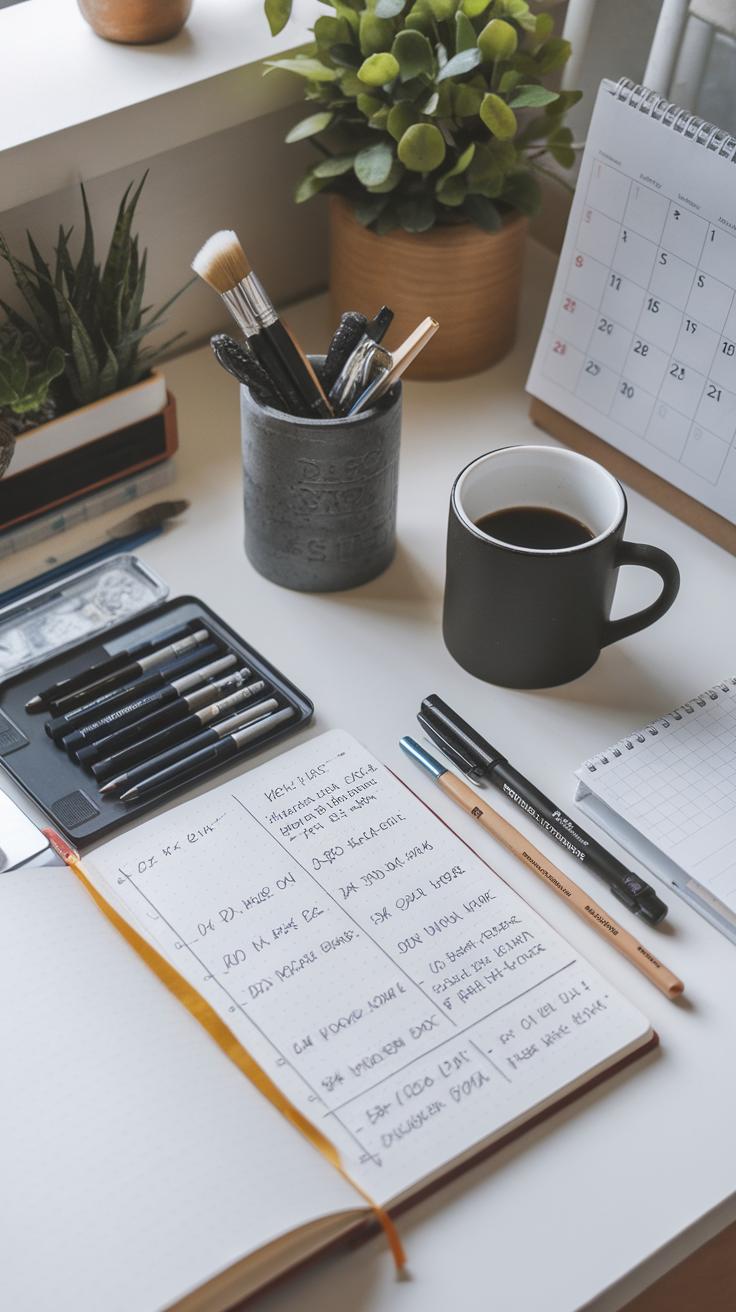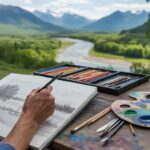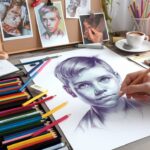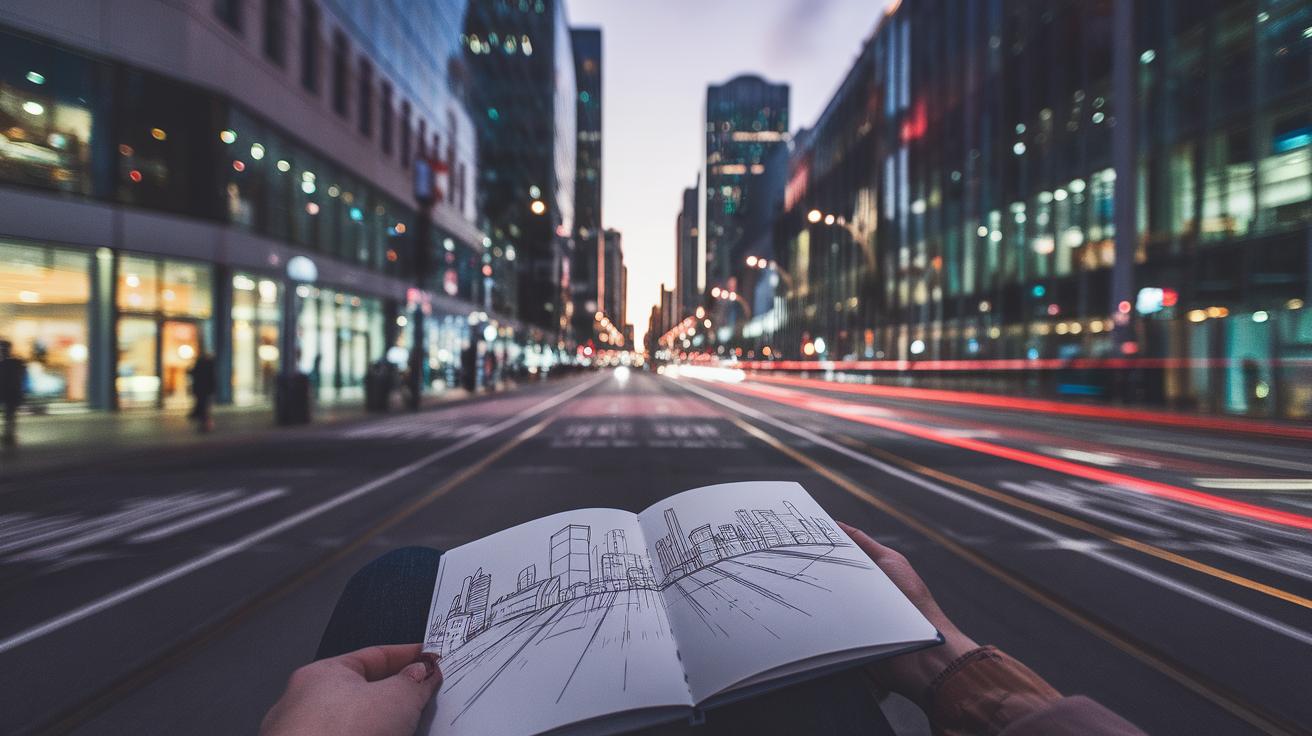
Modern Urban Sketching Techniques Guide
Introduction
Urban sketching is a form of drawing that captures life in cities and towns through direct observation. It encourages artists to record the scenes around them, telling stories through their sketches. This practice allows you to document places as they exist in real-time, creating authentic and truthful art. Whether you are a beginner or have experience, urban sketching offers a way to connect with your environment, improve your skills, and share your perspective.
You will learn how to use different materials and techniques to express what you see. This guide explores key methods and practical tips for urban sketching today. You will find advice on tools, composition, capturing movement, and working with light and shadow. The goal is to help you practice urban sketching effectively while developing your own style. What does your city look like through your eyes? This guide will help you show the world one drawing at a time.
Understanding Urban Sketching and Its Origins
Urban sketching means drawing city scenes directly where you see them. It is about capturing real moments as they happen around you. This practice connects you deeply with your environment, making you notice details others might miss. Urban sketching acts as a truthful record of city life, showing everyday people, buildings, and street scenes without alteration or staging.
The idea grew from the need to document cities honestly and personally. By sketching on location, you understand the atmosphere better than if you worked from photos. This immediacy builds a unique bond between you, your subject, and the city’s rhythm. Urban sketching keeps a visual diary of places as they change over time.
The Birth of Urban Sketchers
The Urban Sketchers movement started in 2007. Gabriel Campanario, a Seattle Times artist, founded it to bring together people who drew cities from life. Online platforms like Flickr and blogs helped artists share their work instantly across the world. This connection allowed sketchers to learn from each other and gain motivation.
From a small group, Urban Sketchers grew quickly. It became a nonprofit organization with thousands of members worldwide. The movement encourages artists to keep sketching wherever they travel or live. It built a global community focused on honest, on-site drawing rather than studio work.
Core Principles of Urban Sketching
The Urban Sketchers manifesto outlines key rules for this art form. First, you must draw from direct observation. This means sketching what you actually see rather than from memory or photos. It keeps your work genuine and tied to a specific place and time.
Second, you should tell stories through your sketches. Use your drawings to show the life, action, and character of urban settings. Third, you can use any media you prefer—pens, pencils, watercolors—what works best for you. The focus is on capturing moments honestly, not on perfect technique or style.
How do these principles change your approach to sketching? They push you to be present, observant, and personal in your work. They remind you that every sketch tells a story only you can tell about your city.
Essential Tools and Materials for Modern Urban Sketching
Urban sketching demands tools that can keep up with quick, on-the-spot drawing. Your supplies should make it easy to capture moments without slowing you down. Think about tools that fit in your bag and work well in different weather conditions.
Water-resistant sketchbooks or mixed-media pads are popular because they handle both wet and dry media. A compact watercolor set allows you to add color without carrying heavy gear. Pencils, pens, and fine liners help you switch quickly between details and broad strokes.
Portable brushes with water reservoirs save space and keep your workflow fast. Some artists use brush pens that combine ink and brushwork for quick lines and shading.
Choosing your tools depends on how you like to sketch. Are you more into detailed lines or loose washes? Do you prefer black and white or colorful scenes? Your kit should reflect your style while staying practical for city streets.
Choosing Your Sketchbook and Paper
Your sketchbook is your main tool when drawing cities on location. Size plays a big role—smaller sketchbooks fit in your bag and are easy to hold, helping you finish sketches faster. Larger books give more space but can be bulky.
Paper texture affects how your media behaves. Smooth paper works well with pens and markers, giving crisp lines. Rougher surfaces grab pigments better, great for pencils and watercolors.
Binding matters too. Spiral-bound books open flat for easier sketching, while stitched bindings can be more durable but harder to handle. Think about your daily routine. Will you sketch standing or sitting? Look for a sketchbook that fits comfortably in your hand and lets you work quickly.
Selecting Drawing Instruments
Choosing your drawing tools shapes how your sketches look. Fine liners and technical pens offer precise lines. Brands like Micron or Staedtler provide inks that won’t fade or bleed through pages. They suit detailed architectural sketches well.
Pencils range from hard (H) for light lines to soft (B) for richer shading. Mechanical pencils stay sharp without sharpening, making them handy outdoors.
Watercolors open many possibilities for urban sketches. Compact sets like those from Winsor & Newton let you add washes of color without extra bulk. Brush pens combine ink and water, ideal for quick shading or expressive strokes.
Markers like Copic or Prismacolor work for vibrant colors but can bleed, so test your paper first. Consider how each tool affects your sketch’s mood. Do you want clean lines or loose expression? Try different tools to find what fits your style and pace.
Composition Techniques to Capture City Life
Your sketch should tell a story about the urban scene you are capturing. Start by looking closely at how buildings, people, and objects relate to each other. Arrange these elements to guide the viewer through your drawing. Consider what part of the scene you want to highlight and use the surrounding features to support that focus.
Use lines and shapes to lead the eye naturally from one area to another. Try placing tall buildings beside open spaces, or busy areas next to quiet spots. This contrast creates interest and helps balance your composition. Think about how each part of your sketch contributes to the overall narrative.
Ask yourself, what feeling do you want to share? Is it the rush of a crowded street, or the calm of a hidden alley? Let that idea shape how you frame and organize your sketch. Practice rearranging elements mentally before you put pen to paper. This habit improves your ability to create meaningful urban drawings that hold attention.
Framing and Perspective Skills
Choosing the right viewpoint changes everything in urban sketching. Look for angles that show depth and reveal layers of activity. Sometimes a low viewpoint makes buildings appear tall and powerful. Other times, a high angle can capture the flow of streets and movement below.
Use perspective rules such as one-point or two-point perspective to keep your sketch accurate. Make sure parallel lines converge towards the right vanishing points. This creates a believable sense of space. Experiment by sketching the same scene from different spots. Notice how the perspective shifts and what story each choice tells.
Framing works like a window. Decide what to include and what to leave out. Focus on the parts that tell your story best. Tight framing can highlight a small detail, while a wider frame shows the environment around it. Practice framing quickly before starting your sketch to strengthen this skill.
Creating Balance and Focus
Balance means arranging your sketch so no part feels too heavy or empty. Place contrasting elements like light and dark, large and small, or simple and complex shapes to create stability. For example, a heavy building on one side can be balanced by a cluster of people on the other.
Direct the viewer’s eye to your main subject using visual pathways. Lines of streets, fences, or shadows can lead toward your focal point. Avoid placing everything in the center. Off-center focal points feel more natural and engaging.
When you add movement and life in your sketches, think about where you want the eye to rest. Use clear, strong lines or spots of color there. Let other areas fade with lighter marks or less detail. Test moving elements around before finalizing your composition. This simple method improves focus and keeps your urban sketches dynamic.
Capturing Movement and Life in Urban Sketches
Drawing a city means capturing its energy. To show movement and life, sketch quickly and let your lines flow freely. Avoid overworking details. Use loose, suggestive shapes to hint at activity. Short, repeated strokes can suggest crowds or traffic without drawing every element.
Your hand should move almost like a timer, marking moments instead of full objects. Try sketching in small bursts, focusing on capturing the gesture of people or vehicles. Ask yourself, what is the story these figures tell? How can their motion be shown with a few lines?
Think about the rhythm in a busy street or the flow of people walking. Use diagonal lines or sweeping curves to lead the viewer’s eye along the page. Let your sketch express the city’s pulse, not just its static buildings.
Sketching People and Traffic
When you sketch people and traffic, speed matters. Begin with gesture drawing — simple, quick marks to catch the pose or motion. Concentrate on body angles, not details. Capture walking, running, or sitting with a few expressive lines.
Vehicles work the same way. Sketch basic shapes like rectangles and circles to outline cars or buses. Add movement by tilting shapes slightly or drawing motion lines. Observe how wheels spin or how people lean into a turn to bring your sketch to life.
Practice drawing figures and vehicles in different positions. Challenge yourself to finish each one in seconds. This will help you improve accuracy and confidence when the city moves fast around you.
Conveying Weather and Atmosphere
Weather defines a city’s mood. Use your brushwork and color choices to show different conditions. Quick, soft strokes can suggest light rain or fog. Sharp, jagged lines may hint at wind or a storm.
Color sets the atmosphere too. Cool blues and grays feel calm or cold. Warm reds and yellows can show sunshine or heat. Try layering marks to create texture like wet pavement or thick clouds overhead.
Notice how shadows soften or stretch in different weather. Adjust your marks to reflect that mood. When sketching outside, observe how light changes during your session and let your marks record those moments.
Using Light and Shadow to Add Depth
Your urban sketches gain power when you use light and shadow effectively. Light defines the shapes and moves your eye through the scene. By understanding the direction where light is coming from, you can see how buildings and street elements create shadows. These shadows add layers that separate objects from the background, making your sketch feel three-dimensional.
Watch how sunlight hits a building’s corner or falls between narrow alleyways. Shadows will stretch, shrink, or soften depending on the light’s angle and strength. Shadows are not just dark patches but shapes that tell you the form and texture of surfaces. Ask yourself, where does the light fall strongest? Where does it fade into shadow? Using this will guide your line work and shading.
Look for contrasts between bright and shaded parts to add drama. This contrast makes your sketches more interesting and believable. When you apply this approach to city scenes, you help viewers feel the volume and depth you see. Have you noticed how shadows change during the day? That dynamic can make your sketches come alive.
Observing Natural Light
Light changes during the day, and it impacts how you see color and contrast in your cityscape. Early morning light tends to be soft and warm, casting gentle shadows. Midday sun shines strong and creates sharp, dark shadows. Late afternoon light warms the scene again but with longer shadows.
Pay attention to how colors look under different lighting. Buildings may appear cooler or warmer, and shadows may take on subtle tones of blue or purple instead of pure black. Notice if the light comes directly from above or from a side; this affects where shadows fall and how intense they are.
Try sketching the same place at different times. What changes? How do shadows move and reshape forms? Observing these shifts trains your eye to capture accurate light effects. This skill deepens realism and mood in your sketches by connecting your drawing to the natural rhythm of light.
Techniques for Rendering Shadows
Shading brings your sketch off the page and gives shapes depth. Start by identifying the darkest shadow areas where light cannot reach. Use heavier lines or fill these spots with dark tones to anchor your sketch. Cross-hatching works well to build layers from light to dark smoothly.
Vary your shading pressure to show gradual shifts in light. Hard, dense strokes suggest strong shadows on solid surfaces like stone or metal. Softer shading can show gentle shadows on pavement or plaster walls. Combine quick, loose strokes with detailed shading to add texture and volume.
Think about shadows as shapes rather than just dark areas. Sometimes, shadows reveal hidden details, like window recesses or street furniture silhouettes. Experiment with black ink washes, graphite pencils, or charcoal for bold shadows. How can you use shadow shapes to guide the viewer’s eye through your cityscape?
Developing Your Personal Style in Urban Sketching
Urban sketching involves choices about how closely you reproduce what you see and how much you express your own vision. Finding your style means deciding what matters most in your sketches. You might focus on capturing every detail of a building or concentrate on the mood of a street scene.
Trying different tools like pens, watercolors, or markers helps you learn what fits your way of working. Sketching varied subjects—cafes, parks, or busy intersections—lets you discover what excites you. Take time to review your sketches and notice which ones feel most like you. Which drawings make you want to do more?
Finding Your Visual Voice
Practice with various drawing methods. Try quick ink lines, loose watercolors, or precise pencil work. Pay attention to what style feels natural or enjoyable. Does bold use of color attract you? Or do you prefer light, careful shading? Reflect on your reactions and choose what fits your artistic sensibility.
Ask yourself: Which techniques hold my interest? Where do I feel most confident? This process helps you spot patterns in your work and move toward a clear visual voice.
Balancing Detail with Expression
Decide when to draw things realistically and when to exaggerate or simplify. Some buildings deserve exact lines; others benefit from loose, energetic strokes. Ask yourself what the sketch needs to communicate. Is it the precise structure or the feeling of a moment?
You can mix styles—capture key details sharply and suggest others with quick marks. Experiment with what grabs attention or tells a story. How much detail supports your artistic goal without overwhelming the viewer? Finding this balance shapes your style and helps your sketches stand out.
Sharing and Connecting with Urban Sketching Communities
Sharing your urban sketches helps you grow as an artist. Showing your work invites new ideas and honest feedback. You can post your drawings online or bring them to in-person events. Both ways offer chances to learn from others who are passionate about sketching cities.
Online, you connect with a global group of artists. In person, you meet people who share your interest in real time. Feedback from viewers often points out details you might miss. You also get motivated by seeing others’ approaches. How does sharing your sketches change the way you look at your work? Have you noticed new techniques by discussing your art with others?
Joining events like symposiums or local meetups encourages collaboration. You sketch together, try new tools, and listen to expert tips. Being part of a community not only builds skills but also keeps your practice exciting. What would happen if you sketched alongside artists with different styles? Would that shift your perspective or open new paths for creativity?
Online Sharing Platforms
You can post your urban sketches on websites like Urban Sketchers, Instagram, and Facebook groups made for city drawing. These platforms allow you to post images, write about your process, and comment on others’ work. Staying active by answering questions or joining challenges helps you build an audience.
Uploading high-quality photos of your sketches attracts more viewers. Adding location tags lets others find your work linked to specific cities. Participate in themed sketch prompts to connect with like-minded artists. How would you engage if you treated your posts as invitations for conversation rather than just display?
Look for communities that match your style or interests. Respond to feedback with gratitude and openness, even if it challenges your approach. Online spaces can become places where you test new ideas before applying them in your own sketchbook.
Attending Sketching Events
Symposiums bring urban sketchers from all over to share knowledge and sketch together. These multi-day events include workshops, demonstrations, and group outings. You learn new techniques directly from professional artists and get immediate guidance on your work.
Even small local meetups or one-day workshops make a difference. They motivate you to sketch regularly and expose you to different city views and tools. Meeting in person builds friendships that inspire long-term practice.
Ask yourself what you can gain by swapping ideas face-to-face rather than online. How might these gatherings push you to try unfamiliar styles or media? When you attend events, push beyond comfort and sketch subjects or angles you usually avoid. Such experiences can jumpstart your artistic growth.
Maintaining a Consistent Urban Sketching Practice
Keeping a steady sketching habit helps you grow your skills and deepen your connection to the city around you. Setting practical goals makes this easier. You might aim for quick sketches each day that take five to ten minutes, or one detailed piece per week. Small targets keep motivation high without causing stress.
Carry your sketchbook and pen with you every day. Having materials ready means you can capture a scene whenever inspiration strikes. Think about the moments when you can pause to draw—a bench at a park, a busy street corner, or a quiet café.
Make it a habit to observe your surroundings closely. Ask yourself what details catch your eye, the shapes of buildings, or the flow of people. These questions train your eye and keep your mind engaged even when you’re not sketching.
Setting Realistic Sketching Goals
Focus on goals that feel doable. For example, sketch a quick urban scene during your morning coffee or draw small building details on the weekend. You can build from brief sketches to longer, more complete works in time.
Track your progress with a simple journal or app. Seeing growth encourages you to keep going. Challenge yourself gently by increasing sketch time or complexity when you feel ready.
What can you accomplish in ten minutes today? Setting clear targets turns that question into a habit that drives your art forward.
Making Sketching Part of Your Routine
Look for moments in your day where sketching fits naturally. Use commute times to sketch from a bus window. Pause during lunch breaks to capture nearby plazas or street scenes. When you travel, let sketching record new places and moods.
Creating space in your schedule for art won’t feel like a burden when it becomes part of what you do, not a separate task. Carry your materials in a lightweight, easy-to-access pouch.
How many times could you sketch this week by simply adding it to your daily rhythm?
Conclusions
Urban sketching teaches you to see your surroundings with more attention and creativity. The methods covered here help you improve technical skills and convey stories with your drawings. By practicing regularly, you gain confidence in capturing urban life in your unique way. You can join communities to share your work and gain inspiration from others who draw on location. Your sketches become records of time and place, reflecting the world as you experience it.
With clear techniques and the right tools, urban sketching becomes a rewarding activity. It invites you to explore your city more deeply and express what makes your environment unique. Keep sketching outdoors, stay truthful to what you witness, and enjoy the process. Your drawings can inspire others to appreciate the beauty and complexity of urban life. What will you capture next in your urban sketchbook?


